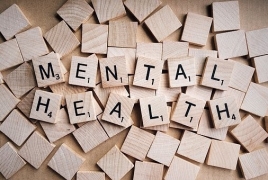
New studies reveal that most psychiatric illnesses are related to one another. Tracing these connections, like the mapping of a river system, promises to help define the main cause of these disorders and the drugs that could alleviate their symptoms, Medical Xpress reports.
The Danish Psychiatric Central Research Register is an enormous treasure trove of clinical data documenting every hospitalization for mental illness in Denmark over the course of 16 years.
In a recent study published in January 2019,Oleguer Plana-Ripoll from Aarhus University in Denmark and his colleagues analyzed records from close to six million Danes. They found that being affected with one mental disorder increased the risk of developing another —pointing to their possible relatedness.
For example, when young women were diagnosed with a mood disorder such as depression before age 20, they had a high risk of developing another disorder such as obsessive-compulsive disorder within the next five years.
The authors provided an interactive web-based tool to help clinicians and researchers see the connections among all types of psychiatric illness in the NB-COMO project.
This clinical study followed on the heels of a paper published in Science magazine last year by the large international collaborative group called the Brainstorm Consortium.
Using new statistical methods, these researchers showed that there is a surprising connectivity among people with different mental illnesses at the level of their inherited, genetic backgrounds.
They studied a quarter of a million patients and found there was a core cluster of similar genetic variations that showed up in all patients, regardless of the kind of illness they were diagnosed with.
This cluster heralded an increased risk for most disorders and, like a canary in the coalmine, constituted a warning system for the future risk of any psychiatric disorder including major depressive disorder, attention deficit hyperactivity disorder (ADHD), bipolar disorder and schizophrenia.

